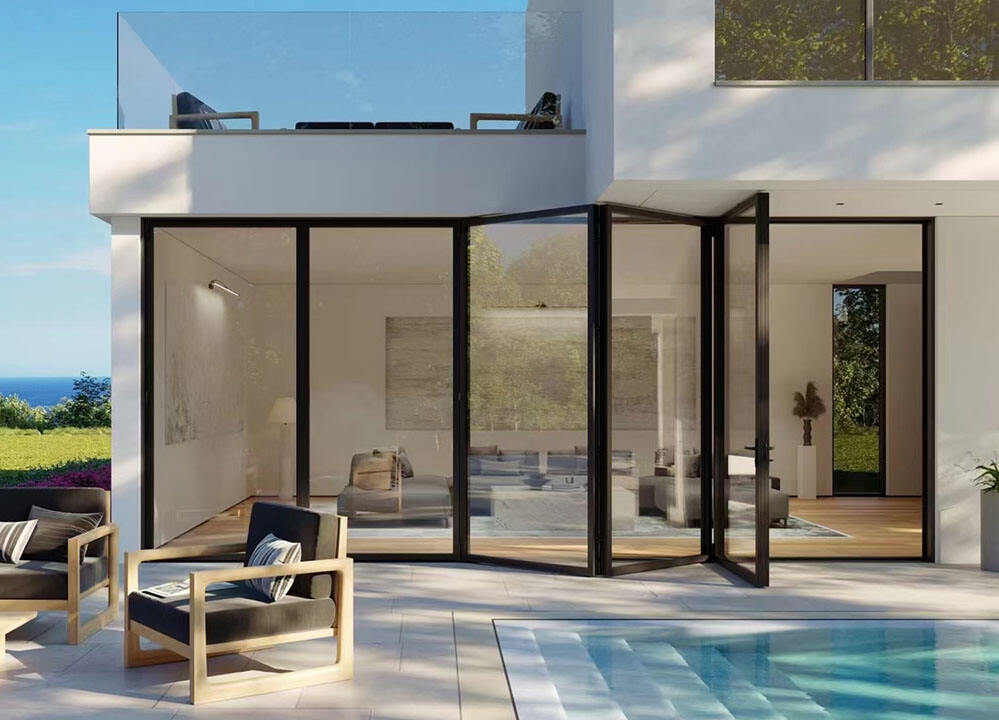Drei Vorteile von Laminierscheiben für Türen und Fenster
Da die Anforderungen der Menschen an die Lebensqualität steigen, verlangen sie auch höhere Ausstattungen und eine vollkommene Erfahrung bei Glasscheiben für Türen und Fenster. Deshalb ist das geklebte Isolierglas mit seiner Leistung in der Heimdekoration zu einem Verlangen vieler Verbraucher geworden. Heute sprechen wir bei Minglei über geklebtes Glas.
Was ist Geschaumtes Glas?

Sicherheitsglas (auch als Laminierscheibe oder Spruchsicherheitsscheibe bekannt) besteht aus zwei oder mehr Stück Floatglas, die mit einem robusten PVB-Folie (Polyvinylbutyralfolie) verleimt werden, wobei die Luft in der Mitte durch einen Heißpressverfahren entwichen wird und dann eine kleine Menge an residueller Luft im Klebefilm unter Hochdruck und bei hohen Temperaturen in einem Hochdruckdampfkocher eingeschlossen wird. Neben PVB umfassen auch andere Zwischenschichten für Sicherheitsglas SGP (ionische Zwischenschicht), EVA (Ethylvinylacetat-Copolymer) usw.
Vorteile von Sicherheitsglas
Sicherheit
Die Lichtdurchlässigkeit der PVB-Folie kann mehr als 90 % erreichen, und der Brechungsindex ist fast identisch mit Glas; sie verhärtet sich nicht, wenn es wärmer als -50°C ist, und zeigt eine gute Klebeleistung bei 130-140°C. Bei dieser Temperatur wird unter Hochdruck das Glas mit ihr verbunden. Beim Pressen wird das Glas fest mit dem Mittelmaterial verbunden. Daher besitzt Schichtglas hohe Stärke, Elastizität und Durchstoßwiderstand und kann immense Stoßkräfte aushalten.

Schallisolierung
Wenn Schichtglas mit Isolierglas verglichen wird, sind die Schallschutz-Effekte von hoch nach tief wie folgt: doppeltes Schicht-Isolierglas > Schicht-Isolierglas > Isolierglas. Das mittlere und tiefe Frequenzrauschen, das Isolierglas nicht lösen kann, kann gut durch Schichtglas gelöst werden. Dies liegt daran, dass die PVB-Folie zwischen dem Schichtglas die Vibration des Glases hemmen und den Lärmtransport blockieren kann, insbesondere die Abschirmungseffekte für mittlere und tiefe Frequenzen.

Energieeinsparung
Sicherheitsglas hat eine natürliche Fähigkeit, ultraviolette Strahlen abzuschirmen. Die PVB-Folie in der Mitte kann mehr als 99 % der UV-Strahlung absorbieren. Das Prinzip besteht darin, UV-Strahlen durch organische UV-Aufnehmer und organische UV-Sperrstoffe in der PVB-Folie zu absorbieren und die UV-Strahlung in Wärmeenergie umzuwandeln. Durch den Einsatz von anorganischen UV-Reflektoren wird die Reflexion und Streuung von UV-Strahlen ermöglicht, und durch das Hinzufügen von "Vanadium" zur Reduktion des Schattierungskoeffizienten erlangt es Energieeinsparungs- und Farbstabilitätsfunktionen. Daher bleibt die Innenraumtemperatur bei direkter Sonneneinstrahlung auf ein farbloses Sicherheitsglas konstant, da die PVB-Schichtteilfolie einen Teil der Wärme absorbiert und nur einen Teil der Wärme ins Zimmer weiterleitet, was den Verbrauch an Klimaanlagen senkt.
Anwendungsszenarien für Sicherheitsglas
Die häufigsten Situationen für die Installation von gefalteten Isolierglass-Türen und -Fenstern in der Wohnraumgestaltung sind die folgenden drei Fälle:
1. Das Haus befindet sich in einer mittleren bis hohen Etage, und bei der Standardausstattung von Außentüren und -fenstern wird temperiertes Isolierglas verwendet. Aus Sicherheitsgründen berücksichtigen Verbraucher jedoch das Risiko eines Glas-Selbstzerfalls und ergänzen deshalb laminiertes Glas.
2. Das Haus liegt in der Nähe lauter Orte wie Straßen, Straßenverbindungen oder Hochstraßen. Um den Schallschutz von Türen und Fenstern zu verbessern, wird das Isolierglas auf Isolierlaminatglas aktualisiert.
In der Stadt, in der Sie sich befinden, herrscht nicht das ganze Jahr über ein geeignetes Klima. Der Wohnraum muss als geschlossenes Wintergarten mit einer Glaskonstruktion und ohne Suspendeck gebaut werden. Um die Wärmedämmleistung zu verbessern, wird dem Standardlaminatglas auf der Oberfläche zusätzlich Isoliertes Laminatglas hinzugefügt.
 |
 |
FAQ
C Farbänderung
Wenn zu Hause laminiertes Isolierglas verwendet wird, ist die Gesamtdicke des Glases dicker, weshalb die Lichtdurchlässigkeit des gesamten Glases geringer sein kann und das Glas grünlich werden kann. Insbesondere beim Austausch des laminierten Isolierglases im gesamten Haus wird dies unpassend wirken, wenn es mit anderen Glassorten verglichen wird. Beachten Sie bitte, dass es nach der Verarbeitung von Low-e-Glas und Weißglas zu laminiertem Glas einen großen Farbunterschied zum doppelten Weißglaslaminat gibt. Deshalb sollten Verbraucher beim Kauf am besten den Händler fragen, ob es eine physikalische Vergleichsmöglichkeit gibt und selbst ihre Akzeptanz prüfen. Beim Konfigurieren von Glas sollte man darauf achten, möglichst keine zu großen Unterschiede zwischen den Glasausführungen von Türen und Fenstern im selben Raum zuzulassen.
Leistungsmerkmale
Wenn das Haus höhere Anforderungen an die Wärmedämmung hat (der K-Wert von isolierendem Verbundglas ist ähnlich wie bei isolierendem Glas), wird empfohlen, zuerst ein einfaches Silber-Low-e in das isolierende Verbundglas zu integrieren, dann doppeltes Silber-Low-e und als Drittes Argon-Gas. Danach wärmekantig und schließlich drei Silber-Schichten.
 EN
EN
 AR
AR
 CS
CS
 DA
DA
 NL
NL
 FI
FI
 FR
FR
 DE
DE
 EL
EL
 HI
HI
 IT
IT
 JA
JA
 KO
KO
 PL
PL
 PT
PT
 RU
RU
 ES
ES
 SV
SV
 IW
IW
 ID
ID
 LV
LV
 LT
LT
 SR
SR
 SK
SK
 SL
SL
 UK
UK
 VI
VI
 ET
ET
 HU
HU
 MT
MT
 TH
TH
 TR
TR
 FA
FA
 MS
MS
 GA
GA
 HY
HY
 UR
UR
 BN
BN
 GU
GU
 TA
TA














